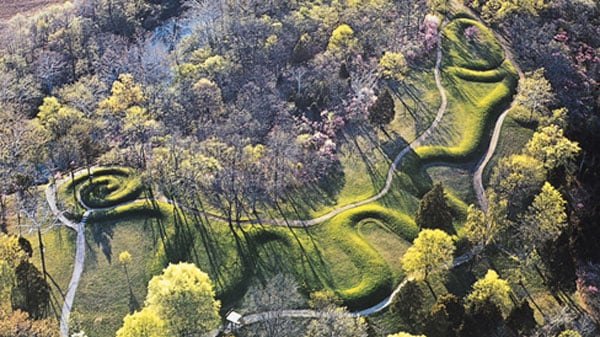I have been attempting to up my game on knowledge of first peoples of North America
-Who will not be interested in this thread: Trump voters, xenophobes, bigots, anti-immigrants, anti-Semites, and other rightwingers who would consider Native Americans to be savages and Hispanics to be "invaders from the south".
-Who may be interested in this thread: erudite people, non-Trump voters, anyone with a curiosity about North America's first nations.
-Who will not be interested in this thread: Trump voters, xenophobes, bigots, anti-immigrants, anti-Semites, and other rightwingers who would consider Native Americans to be savages and Hispanics to be "invaders from the south".
-Who may be interested in this thread: erudite people, non-Trump voters, anyone with a curiosity about North America's first nations.
Ancient Civilizations of North America
Source credit: Professor Edwin Barnhart, Ph.D. Maya Exploration Center
Arriving in the 15th century and beyond, European explorers came to North America hoping to discover another civilization like those of the Maya or Inca to plunder. Not finding mountains of gold or silver, they saw no value in what they did find: myriad sophisticated cultures with hundreds of vibrant cities, roadways, canals, extensive trade networks, art, religious traditions, and thousands of earthen pyramids.
The people who shaped these civilizations—the engineers, political leaders, mathematicians, and astronomers—were also considered to be of no value, labeled by the Europeans as primitive and backwards, often enslaved or murdered. And because the native peoples left no written language, the narrative continued to be shaped by the conquerors, passed down as truth from generation to generation.
But now—with the technological advances of modern archaeology and a new perspective on world history—we are finally able to piece together their compelling true stories.
Astronomers, Engineers, and Hydrologists
The peoples of ancient North America were exceptionally knowledgeable about their environment; their lives required it. Professor Barnhart shows you how they used their detailed understanding of flora and fauna, landforms, geology, and water resources when developing strategies for hunting and gathering, locating villages, and farming. But their intellectual and artistic curiosity went much beyond the immediate need for food and safety. Beginning thousands of years ago, and without the benefit of written language, native peoples became skilled mathematicians, metallurgists, jewelers, construction engineers, astronomers, and more.
Ancient Cities to Rival Those of Classical European Antiquity
Built by a Late Archaic people, Poverty Point is considered by most archaeologists to be the first city in North America. Supporting a population of more than 4,000—40 times the size of an average village at the time—it existed for more than 1,000 years. With Professor Barnhart as your guide, you will understand how Poverty Point has been revealed as a master-planned community, with a 37-acre central plaza; earthen pyramids; and six semi-circular, concentric platform mounds holding hundreds of houses. Carbon-14 dating reveals that the entire set of concentric platform mounds were built in one single phase, requiring extensive leadership, planning, surveying skills, and cooperation from an enormous pool of laborers. Even with its compact organization, every single house had a view of the central plaza—a feat many modern planners would be challenged to accomplish.
Cahokia, built about 1,000 years ago just east of present-day St. Louis, was the largest city in ancient North America north of Mesoamerica. With 3,000 acres and 50,000 people living in its interior and satellite communities, Cahokia dwarfed the contemporaneous populations of London, Paris, and Rome. At one point in its history, the ancient city was razed and replaced with a master-planned version more than three times its previous size. Although many of Cahokia’s features, such as large mounds, ritual spaces, and communal farming, had been seen elsewhere, its scale and level of social organization were unprecedented.
The Legacy of the Iroquois: North American Democracy
At the time of European contact, the Iroquois were a semi-sedentary farming people near Lakes Erie and Ontario whose villages were often in fierce conflict with each other. When three visionary leaders recognized that such continual warfare was holding the nation back, they proposed a tribal confederation known as The Great League of Peace. The League’s Great Council consisted of 50 chiefs, or sachem, each of whom was elected to represent a specific clan by the clan’s female elders. These women voted their representatives in—and could also vote them out. The Great Council settled all disputes and conflicts through dialog, debate, and consensus, guided by the 117 articles of confederation known as the “Great Law of Peace.”
Not only did the Iroquois establish the first North American democracy, but the framers of the U.S. Constitution held the system in the highest regard. Two hundred years after establishing its own Constitution, the United States formally acknowledged this Iroquois legacy in Congressional Resolution 331, stating the “confederation of the original Thirteen Colonies into one republic was influenced by the political system developed by the Iroquois Confederacy as were many of the democratic principles which were incorporated into the Constitution itself.”
https://www.amazon.com/Ancient-Civilizations-of-North-America/dp/B07DX73HVN

